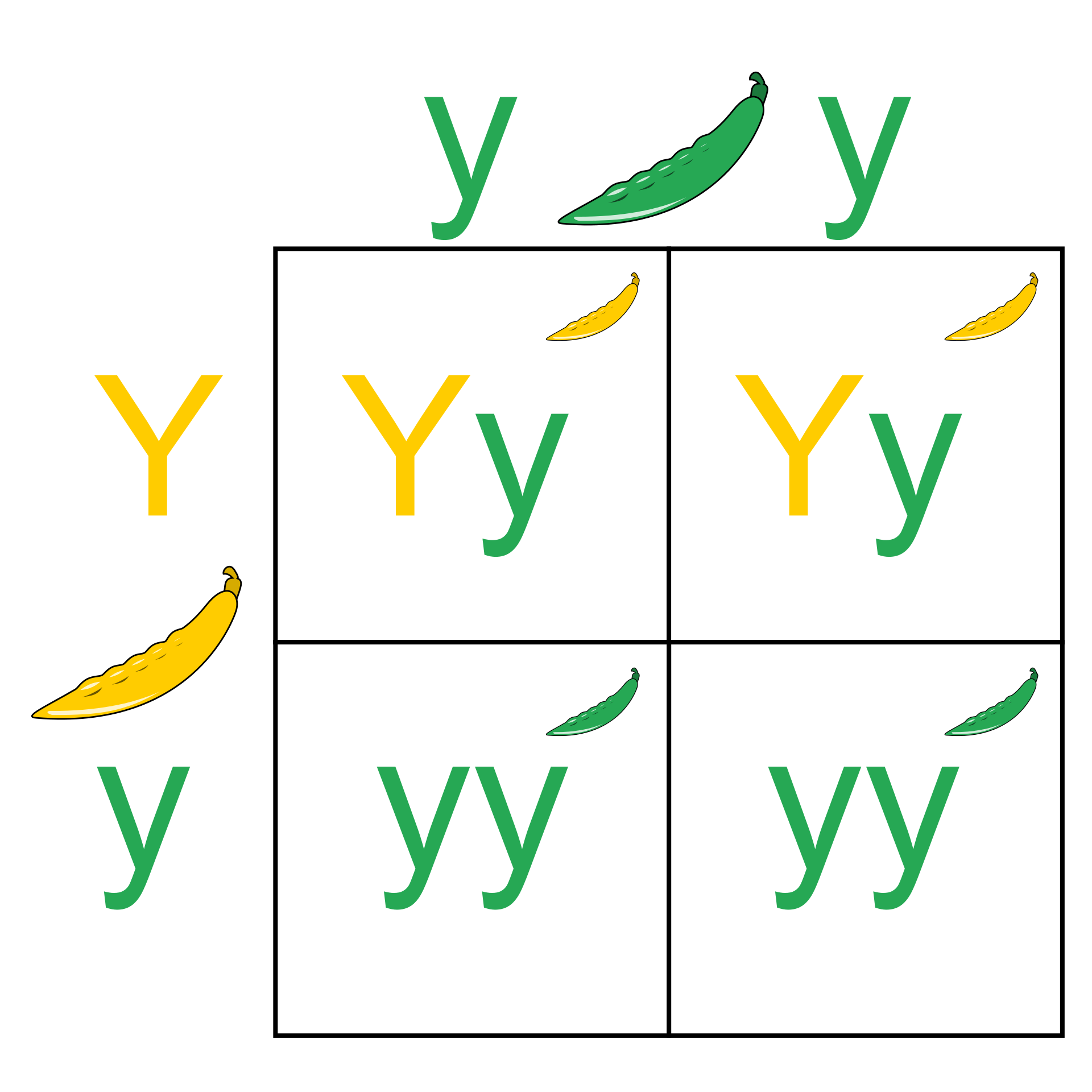Basic Genetics

The above picture shows punnet square for mono hybrid cross, involving the trait : colour of pea pod.
If we draw a punnet square for an -hybrid cross ( A cross between two organisms, where traits are considered ), how many unit squares does it contain ?
If the answer is of the form for positive integers , enter .
The answer is 4.
This section requires Javascript.
You are seeing this because something didn't load right. We suggest you, (a) try
refreshing the page, (b) enabling javascript if it is disabled on your browser and,
finally, (c)
loading the
non-javascript version of this page
. We're sorry about the hassle.
For mono-hybrid cross , as shown in the figure in the question , it will have y , y in row and Y , y in column , giving us 2 × 2 = 4 = 2 2 = 2 2 ( 1 ) unit squares. Now , for dihybrid cross suppose R R , Y Y are two dominant pairs of gametes and r r , y y are recessive. Then we will have r y , R y , r Y , R y in row as well as in column , giving us 4 × 4 = 1 6 = 2 4 = 2 2 ( 2 ) unit squares, by seeking the same logic and pattern we conclude that for n-hybrid cross , there will 2 2 n unit squares. Hence a + b = 2 + 2 = 4 .